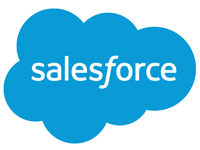They say it can take a product idea 10 years to go from concept to mass-market appeal but that might be only an optimist’s viewpoint. Some of the best ideas in CRM right now have been marinating for at least that long — and some for much longer. Two great examples are analytics and CPQ, which companies like Oracle, Salesforce and others have embraced with passion. Interestingly, each technology has traversed a path that needed other technologies to become fully mature.
“Analytics” — that is, business intelligence and data mining — is an old term for what we now call “machine learning.” Analytics and big data needed a lot of hardware improvements to become prominent.
For example, way back in the 1990s, Kendall Square in Cambridge, Massachusetts — next door to MIT — became known as “AI Alley” for all of the startups there that were going to enable us to know customers’ minds before they did. Most of those pioneering companies are gone now, but their ideas generated big R&D throughout the tech sector.
One of the major drawbacks of any kind of advanced analysis is the need for processing power on specific data. To do that, you need fast CPUs — but also, your data can’t be static and sitting on a disk. So, the AI movement influenced not only speedups for CPUs, such as multiprocessors and federated computing, but also in-memory databases and very dense memory.
Of course, it took 20 years, but today we’re reaping the benefits of the investment and research necessary for all of it to happen. Now we really do have the ability to know probabilistically what customers in the aggregate will think, and we can act by putting next best action suggestions on a smartphone. That’s pretty cool.
Flag the Outliers
Analytics has come a long way, but the ultimate benefit likely will be felt in the Internet of Things, as machines increasingly communicate with machines with rich data streams that have to be monitored for exceptions.
CPQ — or configure, price, quote — software has become a now, or in the moment, idea. It was once a standalone category that could be grafted on to SFA for companies that needed it — but every company needs CPQ, and without it many are reduced to relying on spreadsheet apps that often collapse under their own weight.
Consider the spreadsheets involved in proto-CPQ. We all developed spreadsheets in-house to deal with needs not addressed elsewhere for the product catalog, including prices and descriptions. Businesses also needed a spreadsheet for each deal, which would be updated multiple times within a sales process. Quarterly updates to the product spreadsheet and random updates to quotes invited all kinds of problems.
Sales reps are known for their ability to seek out the shortest distance to close, and we love them for it. However, in the past the path often went through using old quotes modified for new deals, using old product catalogs and price lists, and possibly offering the wrong discounting.
In that type of scenario, management has to patrol every bid for every deal, and that’s getting to be hard to do. Management would rather be promoting the new product line with new pricing and other things that add greater value.
There’s also the issue of turning the catalog loose on a website so that customers can configure their own solutions. However, you can’t begin to do that unless you can build business rules into the process — such as “Product A is always sold with 2-Product B’s, or 1 Product C plus services.”
Other forms of front-office automation, like SFA, make it possible for reps to handle increasing territory responsibilities. That decreases the number of reps needed but leaves their managers with the same amount of work reviewing manually created quotes.
The front-office strategy today is to manage the exceptions — SFA with analytics and good reporting makes managing the territory easy. However, spreadsheet-based CPQ is not a good fit for analytics, so CPQ becomes the weak link in an otherwise improved sales process.
Spreadsheet CPQ is impossible to manage by exception, leading to slow turnaround on quotes and lost deals. To manage quotes by exception, the same as you manage a territory, you need a CPQ system.
Not surprisingly, this is where analytics and CPQ cross paths. Analytics tools are great at finding the exceptions based on the business rules set up. Rather than a manager scanning all deals or offers, a rules and analytics-based CPQ system simply can flag outliers, such as overly generous discounts or incorrect pricing.
There might be legitimate reasons for the exceptions, but there should be easy ways to find and deal with them without having to sift through the majority of plain vanilla deals.
Agility for All
Besides just saving labor or improving accuracy, a business that more easily pivots on a customer’s quotation request and does it first is in a better position to win. It’s a form of business agility — an idea much in the news today.
Agility is supposed to be about flexibility, as well as the capability to change rapidly and evolve to meet market demands accurately without incurring a great deal of overhead. Business agility is important. While it might be possible to manually respond to a single special need, it’s not a good idea to base a business model on it. Specifically, responding to special needs — good! Doing it manually over the long run — not so much.
Last point: If business agility is important to your business, then software agility ought to be important too. This means using solutions built on the same platform, where possible, so that they use the same objects and data naturally, without having to rely on massive integrations.
In my experience, many point solution integrations take a toll on IT that should be avoided if you expect to maximize your business’ agility.
CPQ and analytics have come a long way over decades to provide us with some of the needed components of a truly agile business approach today. Spreadsheets barely have changed. In a more competitive world, it makes great sense to ensure that every part of your key business processes (there’s nothing more core than sales) is supported by a system — not a spreadsheet — and the best way to do this is with platform-based components like CPQ.
























































